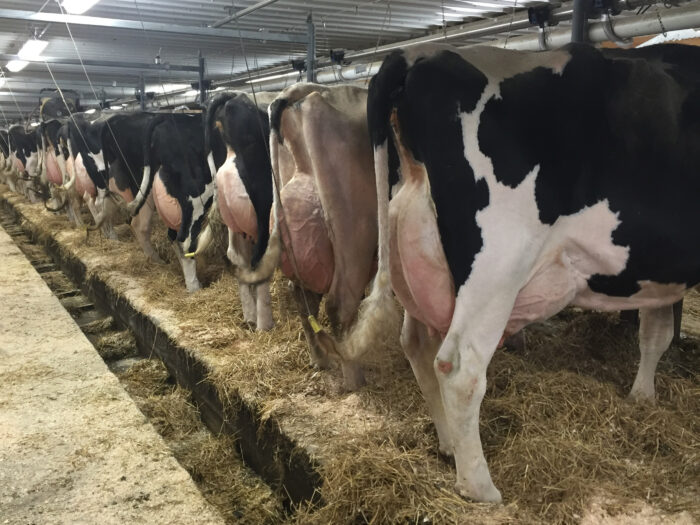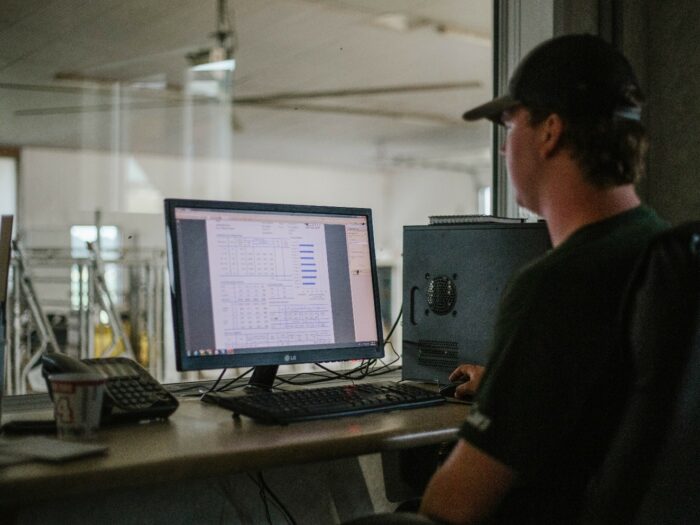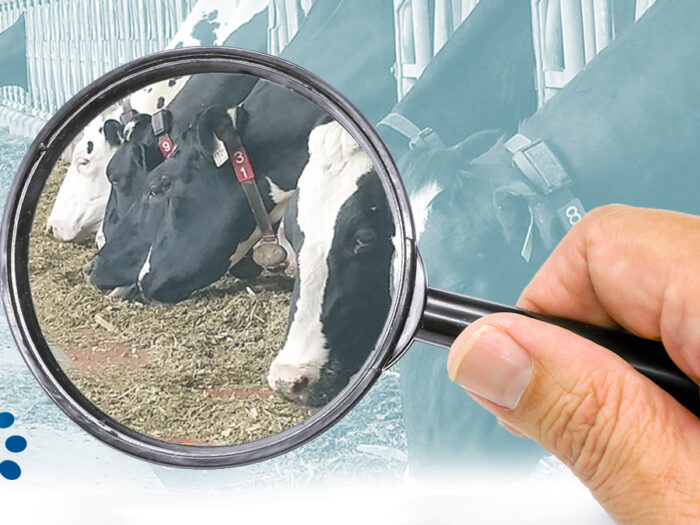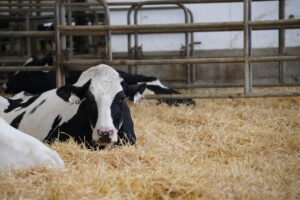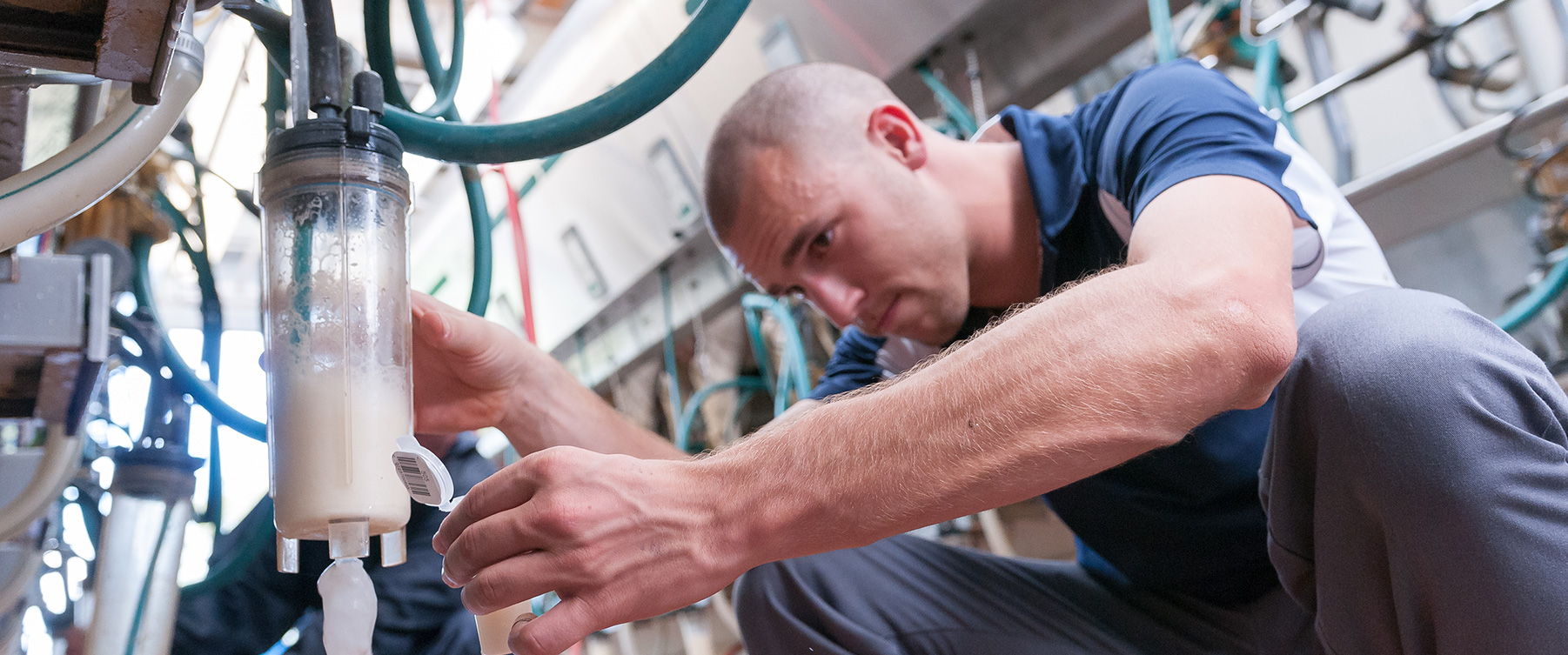
Reports to Manage Your Herd in Ontario and Western Canada
First and foremost our goal is to simplify herd management by providing you with quality data to help you reach your production goals.
By collecting, aggregating and organizing the performance data from each cow in Canada, we are able to generate online reports for you within 48 hours of milk testing.
Robot Production & Efficiency Report
With *130,000+ cows on test in robot herds (and growing daily), our Robot Production and Efficiency Report is a valuable tool that measures performance in so many ways.. (*October 2023)
- Enhanced metrics and benchmarks – beyond typical robot data
- Easy to understand
- Free for herds on milk recording (including eDHI)
- Conveniently accessible electronically
View the Interactive Robot Production and Efficiency Report
To learn more about the Robot Report and how you can gain $85,000 per year per robot, read this article by Gervais Bisson: “Now you can compare with the best robot farms!”
Lactanet provides several ways for you to access your results based on your preference and you can also choose to receive them in multiple formats.
- Internet reports*: Results can be accessed on-line through the Lactanet MySite.
- Lactanet Mobile App*: Results can be accessed through your Apple or Android mobile device.
- DairyComp: Downloaded into your on-farm DairyComp software.
- Other Software: Data file imported into other herd management software.
- Paper reports: Paper reports can be mailed after each test.
Herd Summary & Herd Monitor Reports
All milk recording customers receive either a Herd Summary Report or Herd Monitor Report after each milk test. They each provide essential information that measures herd performance in several management areas. This fact sheet can help you decide which tool is best for you and the optional choices available.
Popular Reports & Optional Services
For customers who subscribe to milk recording services, a few of Lactanet’s popular tools include:
The Cow Income Monitor Report shows the economic impact of individual cow performance. All animals are grouped into first, second, and third (or greater) lactation groups and are ranked from highest to lowest milk value within the group based on their 305 day projection, using multiple component pricing. Select 8 out of an available 42 unique information columns to display the information most valuable to you.
Please see this document for all of the optional information columns available within the Cow Income Monitor. These options can be changed on any test day at no additional cost.
- The Cow Summary Report allows you to track and follow the progress of individual animals. It shows current test day and lactation production information for individuals.
- The Cow Monitor Report offers the same information as Cow Summary, but with the added opportunity to choose from 4 columns of information from an available 30 choices. Select the issues that you wish to track on an individual basis. See this document to view choices.
The Hotsheet Report is designed to provide herd managers with a quick overview of cows that may be experiencing problems or aid in identifying potential herd problems. This report lists animals that are outside a specific range for seven indicators of cow performance.
- The MUN Herd Summary Report lists each cow and plots her MUN level against her days in milk. With this information, analyze MUN levels of the herd throughout lactation stages and by lactation group. This report is a useful tool for analyzing feed efficiency optimization.
- The MUN Cow Summary Report lists all animals, grouped by lactation and ranked by lowest to highest days in milk. It shows MUN values and lactation group averages.
- The SCC Herd Summary Report shows herd SCC history from previous tests. The graphs on this report show the percentage of animals in the parity and stage of lactation groups, with an average SCC of greater than 200,000 (4.0 LS) for current and previous tests. The graphs are also segmented by lactation groups.
- The SCC Management List Report, located on the back of the Herd Summary is a great tool for managing SCC in the herd. Only the cows above 200,000 SCC will be on this list, and it is ranked from highest SCC tank contribution to lowest.
- The SCC Cow Summary Report includes a list of all animals and their current test day information. It also includes their SCC and linear score for the past year.
Milk pregnancy testing is an easy, quick, reliable, affordable and noninvasive option for detecting and confirming pregnancies in your herd.
Mastitis4 testing Milk DNA test accurately identifies the presence of four mastitis contagious pathogens.
The KetoLab Herd Report provides an overview of the ketosis status and risk within your herd. Since early lactation is the relevant period for ketosis, results are reported for 5-21 DIM, and 22-42 DIM. The percentage of cows positive for BHB (beta-hydroxybutyrate) is reported along with a herd trend of the last 10 DHI tests, with the most recent date on top.
The KetoLab Cow Report provides individual results of cows between 5-42 DIM. They are reported by positive or negative and are sorted by DIM, then by barn name or chain.
Leukosis, sometimes referred to as Enzootic Bovine Leukosis Virus or BLV, is available for testing through your regularly collected milk sample. Producers will receive both the Herd Summary and Cow Summary upon testing for Leukosis.
- The Leukosis Herd Summary Report provides an overview of the results of the tested samples. Herd Summary includes three portions: Number of samples tested, number of positive samples, and % of Leukosis positive samples.
- The Leukosis Cow Summary Report provides more detailed results for each cow tested. Tested cows are ranked in this report by their ELISA score. Animals with the highest scores are listed at the top, and low scores are listed at the bottom. Cows are also grouped by Positive, Suspect, and Negative results.
Producers will receive two reports each time animals from their herd are tested using with the milk ELISA test for Johne’s.
- The Johne’s Herd Screening Summary Report provides a summarization of the results of the tested samples. This report has three areas: herd summary, results interpretation, and Johne’s screening test results by age.
- The Johne’s Cow Screening Report provides detailed results for each cow tested. Tested cows are ranked on the report by their ELISA score. Animals with the highest scores are listed at the top while animals listed with the lowest are listed at the bottom. Animals are also grouped by their results which are High Positive, Positive, Suspect, and Negative.
Certificates of Production and Cow Profile may be issued whenever a cow’s record is completed, when the cow completes a 305 production, or not at all.
The Certificate of Production Report provides a summary of a cow’s completed lactations along with lifetime summary, pedigree and genetic information. This report has 3 main areas: Lactation Profile, Cow & Herd Details, and Lactation Summary.
The Cow Profile Report is on the back of the Certificate of Production. It provides a visual of the recently completed lactation as well as additional information about previous lactations.
The Breed Management Report is issued when a herd has more than one breed included in their milking herd. The report segments each breed and provides detailed lactation group information, production averages, and a test day summary.
The Genetic Herd Inventory Report is usually issued once per year after the December round of genetic evaluations. This report provides a complete herd listing with detailed animals information including: animal registration #, sire, % inbred, LPI index, Pro$ index, and production information.
For more information, see Lactanet’s Solutions Guide.
How to access your results
Lactanet provides several ways for you to access your results based on your preference and you can also choose to receive them in multiple formats.
- Internet reports*: Access results on-line through your MySite account.
- Lactanet Mobile App*: Access results through your Apple or Android mobile device.
- DairyComp: Results are automatically downloaded into your on-farm DairyComp software.
- Other Software: Data files are imported into other herd management software.
- Paper reports: Paper reports can be mailed after each test.


